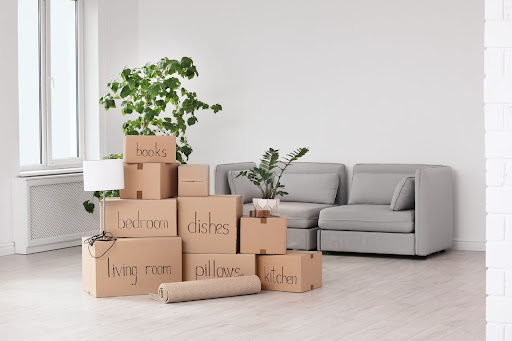


If you're thinking of making a move abroad, then you may be anxious about packing your breakable sentimental items. How can you ensure your household items are safe when transported from the UK to Europe? With over 20 years in the industry, we've compiled a list of tips that will make your packing simpler and safer.
Packing well in advance will make moving from the UK to Spain less stressful. A little bit of packing every day is more manageable than trying to load everything all at once. So a couple of weeks (or months) before your move, begin packing the items you don’t need to use in the wait to the big move day. These include off-season clothing, previously read books, souvenirs, photos and other keepsakes.
Moving to a new residence allows you to remove clutter. The more unnecessary items you get rid of now, the less you'll have to move to your new home. So discard damaged or broken items and donate or sell things you no longer need. Measure your new place, and throw out furniture that won’t fit. Go through each room, and categorise items you intend to keep, sell, donate or throw away.
Gather all your important documents into one folder to be accessed easily. These include your birth certificate, leases or purchase agreements, passport, tax documents, insurance certificate and social security card. Have a separate box where you can store backup copies of valuable documents just in case. While it will take time and effort to make a copy of all your documents, you can't risk your only copy being damaged during transport. It is best practice to keep all your personal documents with you and not add these to your boxes for your moving company.
Before moving, prepare your packing supplies. Make sure you have adhesive tape, packaging tape, box cutters, scissors, trash bags, Ziploc bags, paper towels, shrink film, bubble wrap, newspapers, furniture pads, moving blankets and markers.
It is recommended that you use packing supplies designed for packing and moving items. These are typically available at local hardware stores. You can also consider renting equipment from a company providing removal services.
Make sure that the boxes you use for packing and moving your items are durable. Using poor-quality boxes can result in a disaster if they break during transit. Additionally, it’s best to place heavy items such as books in small containers. Large boxes, on the other hand, can be filled with light items such as pillows or towels. If you fill large boxes with heavy objects, they are more likely to break.
You can also try looking for the original boxes that your TV and other electronics came in. These boxes are specifically designed to hold your electronics, making it easier to pack and transport them.
Overpacking a moving box is not a good idea. Use as many boxes as necessary to make transporting them more manageable. Don't let your largest boxes exceed 50 lbs.
Also, make sure the boxes don't have empty spaces. If gaps exist, fill them with paper, clothes, towels or packing peanuts to keep items from shifting during transport. Apply tape to seal parts of the box that bear the most stress, such as the bottom and top seams and along the edges. Another tip is not to pack boxes too tight as this will contribute to its weight and lead to problems. If you have boxes of the same weight, you’ll be able to stack them better.
Take apart any furniture pieces that can be disassembled. Your furniture pieces should be broken down into the smallest parts possible for more accessible transport. To avoid losing screws and other furniture hardware while disassembling furniture, you can gather the screws, nuts and bolts in one bag. Then, you can tape the bag to the corresponding furniture.
Wrap fragile items with moving blankets to keep them from being damaged. And before packing up your electronics, snap a picture of the back so you remember where the cords go. Do the same for your furniture, and take photos of the disassembled parts.
Of course, highly fragile items require extra care to prevent damage. Fragile items should be wrapped carefully in paper, moving blankets or bubble wrap. Pack your mirrors, wrap each item in bubble wrap and store them vertically in a big box. Together, they will move less, which will make the glass less likely to shatter. If you have expensive art to transport, check with your mover about special crates. For dishes, wrap each one in packing paper, then bundle five or six dishes together using more packing paper. Store dishes upright, and stuff lots of paper for added padding.
Folded or rolled clothing can be packed in suitcases or boxes. You can also keep them in the dresser—granted that your dresser won’t be too heavy or too difficult to move afterwards. Use shrink wrap so that the drawers don't slide out during transport.
Be careful of spill-prone items such as shampoo bottles and oils. Keep liquid things separate from dry goods. You can also use plastic wrap to create a seal around the bottle.
Lable each box and suitcase with: the room it belongs to, its contents and whether or not it contains fragile items. This process will steamline your unpacking process.
An essentials box contains items that will come in handy on moving day. You can include the following: toilet paper, snacks, water, trash bags, scissors, toiletries, a first aid kit, sponge, clothes and dishes or paper plates.
Are you still feeling overwhelmed at packing all your items for your big move? Want to move house abroad without all the hassles of packing, loading and unloading your furniture and other valuables? At Cotswold Carriers, we can help you save time and energy with our professional packing and moving services.